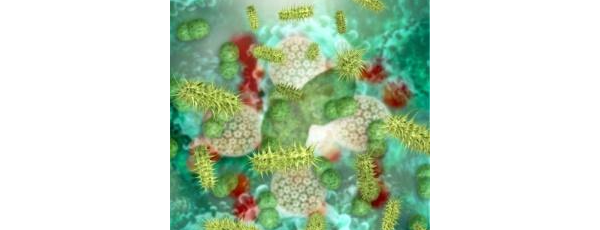Wound Assessment Tools: A Basic Introduction to PUSH, NPUAP and Wagner
November 19, 2015
There are many tools that can be used to assess wounds. It is important to be aware of these tools and what they measure. It is also important to become knowledgeable about the tool(s) used in your workplace.
PUSH Tool
The Pressure Ulcer Scale for Healing (PUSH) tool is a fast and accurate tool used to measure the status of pressure wounds over time. The tool was designed by the National Pressure Ulcer Advisory Panel (NPUAP) and has been validated many times over. The NPUAP recommends that the tool be used on a regular basis, at least weekly or whenever the patient or wound status changes. The PUSH tool measures three parameters that are considered most indicative of healing:
- Wound size (greatest length x greatest width = wound surface area)
- Exudate amount (estimate as light, moderate or heavy after removal of the dressing)
- Tissue type (closed/resurfaced, epithelial tissue, granulation tissue, slough, necrotic tissue/eschar)
NPUAP-EPUAP Pressure Ulcer Classification System
The NPUAP and the EPUAP (European Pressure Ulcer Advisory Panel) collaborated together to develop an international classification system for pressure ulcers, with a focus on evidence-based care for the prevention and treatment of pressure ulcers that can be used anywhere in the world with familiarity. It is important to note that the NPUAP recognizes two additional categories, unclassified/unstageable and deep tissue injury, both of which are graded as "IV" in Europe. The categories agreed upon by the panels include: Category/Stage l Pressure Ulcer: Non-Blanchable Redness of Intact Skin: Stage/category I pressure ulcers are characterized by superficial reddening of the skin (or red, blue or purple hues in darkly pigmented skin) that when pressed does not turn white (non-blanchable redness). The wound area may be painful and feel firm, soft, or warmer or cooler to the touch compared to tissue surrounding the wound. These pressure ulcers may indicate "at risk" individuals. Category/stage I pressure ulcers may be difficult to identify in individuals with darker skin tones. Category/Stage ll Pressure Ulcers: Partial-Thickness Skin Loss or Blister: Category/stage II pressure ulcers are characterized by partial-thickness loss into, but no deeper than, the dermis. These wounds present as shallow open ulcers with a red pink wound bed, without slough and may also include intact or ruptured blisters and abrasions. Category/stage II pressure ulcers should not be used to describe other types of tissue damage including skin tears, medical adhesive-related injuries, moisture-associated skin damage, maceration and excoriation. Category/Stage lll: Full-Thickness Skin Loss (fat visible): Full-thickness tissue loss. Category/stage III pressure ulcers are characterized by full-thickness skin loss potentially extending into the subcutaneous tissue layer, without exposure of bone, tendon or muscle tissue. These wounds may include undermining and tunneling, and may have slough present. Category/stage III pressure ulcer depth varies by location on the body. Category/Stage lV: Full-Thickness Tissue Loss (muscle/bone visible): Category/stage IV pressure ulcers are characterized by full-thickness tissue loss, exposing underlying muscle, tendon, cartilage or bone. The wound may include undermining and tunneling, and may have slough or eschar present. Bone and muscle are visible and directly palpable in these wounds. Category/stage IV pressure ulcer depth varies by location on the body. These wounds can extend into muscle and other supporting structure, increasing the occurrence of osteomylelitis or osteitis. The depth of a category/stage IV pressure ulcer varies by anatomical location. Unstageable/Unclassified: Full-Thickness Skin or Tissue Loss – Depth Unknown: Unstageable/unclassified pressure ulcers will be either a category/stage III or IV ulcer, and are characterized by the wound being completely obscured by slough and/or eschar, making the depth of the wound bed indeterminable. In order to properly stage these full-thickness pressure ulcers, enough slough and/or eschar are removed to make the base of the wound bed visible. Suspected Deep Tissue Injury – Depth Unknown: Suspected deep tissue injuries are characterized by purple or maroon areas of intact skin or blood-filled blisters caused by damage to the underlying soft tissues. Suspected deep tissue injuries may be painful and may feel firm, mushy, boggy, or warmer or cooler to the touch as compared to surrounding tissue. Suspected deep tissue injury may be difficult to detect in individuals with dark skin tones. It is common for a thin blister to form over the surface of the area, and the wound may further evolve to become covered by thin eschar. Deterioration of suspected deep tissue injuries may be rapid, exposing additional layers of damaged tissue, even under optimal care. Note that these definitions reference the Pressure Ulcer Treatment Quick Reference Guide (see Sources).
Wagner Ulcer Classification System
This classification system is widely used and is based on extent of necrosis, presence of gangrene or osteomyelitis, and depth of the wound. It is often used to classify diabetic foot ulcers. The Wagner system utilizes 6 classes, or grades: 0 - No open lesions; may have deformity or cellulitis 1 - Superficial diabetic ulcer (partial- or full-thickness) 2 - Ulcer extension to ligament, tendon, joint capsule, or deep fascia without abscess or osteomyelitis 3 - Deep ulcer with abscess, osteomyelitis, or joint sepsis 4 - Gangrene localized to portion of forefoot or heel 5 - Extensive gangrenous involvement of the entire foot As can be seen, there are many wound assessment tools, each with their benefits and drawbacks. It is likely that your workplace will utilize a single tool. What is more important than the tool you use is using the tool regularly to assess wounds, so that the interventions you perform and the extent of healing can be assessed accurately by you and others who may be tasked with caring for the patient's wound.
Sources:
PUSH Tool 3.0 (web version). National Pressure Ulcer Advisory Panel. http://www.npuap.org/resources/educational-and-clinical-resources/push-… European Pressure Ulcer Advisory Panel and National Pressure Ulcer Advisory Panel. Treatment of pressure ulcers: Quick Reference Guide. Washington DC: National Pressure Ulcer Advisory Panel; 2009.
Frykberg, R. (2002). Diabetic Foot Ulcers: Pathogenesis and Management. Am Fam Physician. 2002 Nov 1;66(9):1655-1663.
About The Author
Laurie Swezey RN, BSN, CWOCN, CWS, FACCWS is a Certified Wound Therapist and enterostomal therapist, founder and president of WoundEducators.com, and advocate of incorporating digital and computer technology into the field of wound care.
The views and opinions expressed in this content are solely those of the contributor, and do not represent the views of WoundSource, HMP Global, its affiliates, or subsidiary companies.











